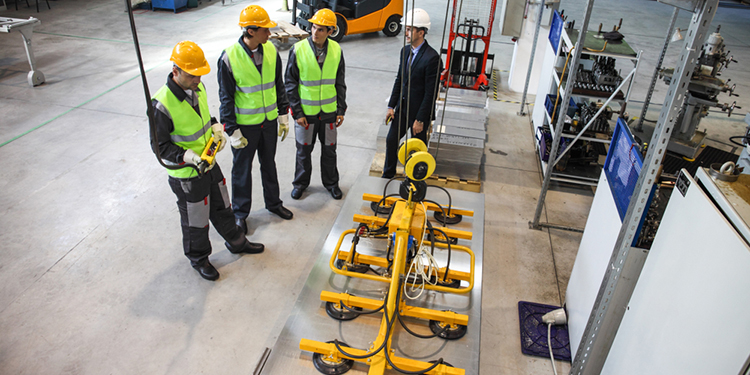Seven Key Technologies That Enhance Overhead Handling System Safety, Productivity

Overhead handling solutions like cranes, monorails and hoists have been on the cutting edge of load lifting, transport and positioning since the introduction of the first steam-powered cranes in 1861. And, like the vast majority of material handling equipment, these systems have only grown in their capabilities as they’ve been enhanced with the latest available safety and productivity boosting technologies.
Indeed, many of today’s overhead lifting systems are outfitted with as many as seven key technologies to help their owners ensure the safety of their operation while increasing handling speed and precision. These include:
- Wireless remote controls that utilize radio or infrared signals to relay function instructions to the system. This allows a worker to operate the crane from a location that ensures they are a safe distance from the load.
- Advanced variable speed controls integrated into both lifting and traversing motors for smooth starts and stops. This improves load positioning, extends the lifespan of both gear trains and brakes, and minimizes the risk of damage to the item being handled.
- Overload limiting devices prevent the system from lifting loads whose weight exceeds the rated capacity of the overhead handling system. With this technology, the risk of damage to the crane, monorail or hoist is significantly reduced.
- Ergonomic controls allow an operator to comfortably direct the function of the overhead lifting solution for long periods of time while minimizing fatigue and decreasing the chance of repetitive stress injuries.
- Material advancements in the ropes and chains used to lift loads extend the life of the lifting system as well as ensure its safe operation for years to come.
- Advancements in electric motor technologies increase equipment reliability and duty cycles while minimizing maintenance requirements and associated downtime.
- Diagnostic data outputs provide a trove of information about key performance indicators such as: hours of run time; starts on contactors and transformers; average load data; predictive maintenance scheduling. Equipped with this information, an overhead handling system owner can quickly troubleshoot issues while minimizing the need for expensive repairs.
What else can overhead handling solutions do to increase safety and productivity in your facility? Thirteen different ways these technologies enhance manufacturing and distribution operations are explored in “Expand Your Possibilities. Discover the Potential. Choose Overhead Lifting.” This free guide is published by MHI’s Overhead Alliance (which includes the Crane Manufacturers Association of America (CMAA), the Hoist Manufacturers Institute (HMI), and the Monorail Manufacturers Association (MMA)).



